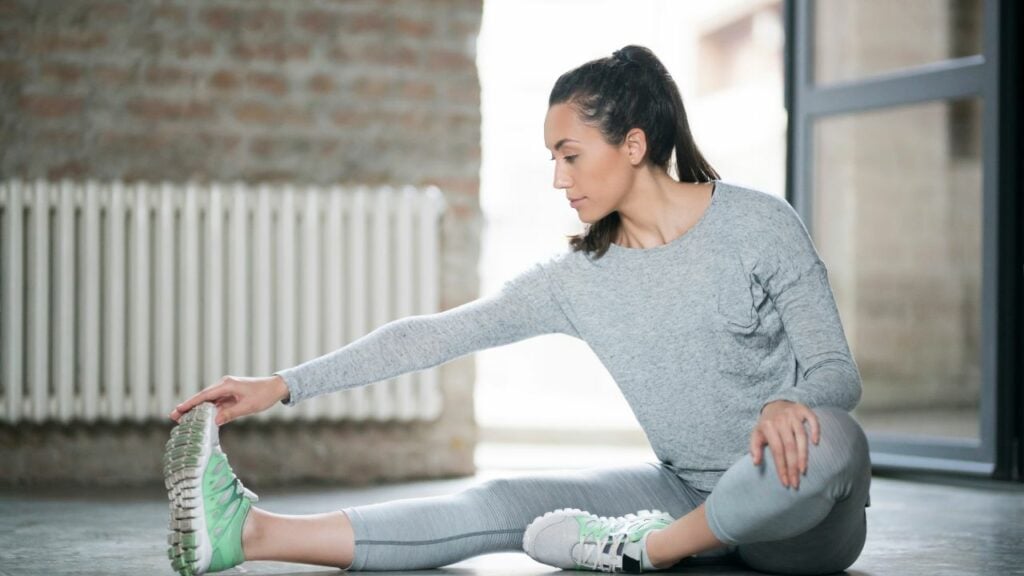Strengthening your calf muscles can also make you a more efficient runner.
Increasing your running efficiency means you’ll be able to run for longer distances with less fatigue.
The calf complex is largely responsible for your propulsion forward when running
Increasing your calf strength means you’ll be able to run faster and easier because you’ll have more propulsion forward while running.
Quadriceps
Think of your Quadriceps as the springs in your car.
If you’re driving down a bumpy road you’ll want nice big heavy springs in your car so you don’t feel every little bump in the road
The bigger the springs, the smoother the ride.
The bigger and stronger the Quadriceps, the smoother and comfier the run.
Quadriceps muscles have an absorption role in the lower limbs.
Every time your foot strikes the ground during a run you’ll apply a force into the ground.
Newton’s 3rd Law: For every action, there is an equal and opposite reaction.
So you apply a force into the ground and the ground pushes back and applies a force into you.
The quadriceps play a large part in absorbing this force that the ground is pushing back with.
When running the Quadriceps experience a force that can be up to 6 times your bodyweight!
This is why we want big strong springs for our car or else we’ll experience a bumpy ride
When the quadriceps can’t handle this amount of force then elsewhere in the body absorbs the force.
A common injury that can occur due to weak quadriceps is Runner’s Knee.
Hamstrings
Are the back of your legs sore after completing speed work?
Or maybe the back of your legs feel tight after some hill runs?
These sorts of feelings are very common when someone has worked their hamstring muscles more than what the muscles are accustomed to.
The main role of the hamstring muscles in running is to slow the leg down as it swings forward during running.
In this type of contraction the muscle is slowly getting longer while it contracts.
This type of muscle contraction is called eccentric contraction
Eccentric Contraction: Muscle lengthening that occurs when the force applied to the muscle exceeds the force it produces.
An easy way to understand this is to think of a Biceps Curl.
The slow lowering of the weight from the top of the biceps curl is an example of an eccentric contraction
When completing Hill runs, the hamstrings work more in helping propel you up the hill.
This is why the hamstrings are often sore after hill runs
Completing an eccentric type of exercise is a nice way of strengthening the hamstrings in a way that replicates how they’re most frequently used.
Eccentric Muscle training is often more demanding than traditional resistance training so you don’t need to complete a high number of sets and repetitions.
Ex. 3 x 5-8 is usually sufficient


